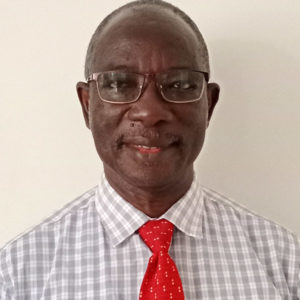The journey to onchocerciasis elimination: Do we know where we are?
By Professor Daniel Adjei Boakye
From the mid-1970s to late 1990s, the elimination of blinding onchocerciasis by the Onchocerciasis Control Programme in West Africa (OCP) and the donation of ivermectin by Merck and Co. led to the establishment of the African Programme for Onchocerciasis Control (APOC) in 1995 to eliminate onchocerciasis as a public health problem across Africa.
Following studies in Mali and Senegal in 2005, there was a paradigm shift from the elimination of onchocerciasis as a public health problem to the elimination of parasite transmission.
Interestingly, this paradigm shift did not change the APOC strategy of annual community directed treatment with ivermectin (CDTi) but APOC moved to expand CDTi into hypoendemic areas. While APOC evaluated the progress towards interruption of transmission in 58 areas in 12 countries, evaluations were not continued after APOC closure in 2015. Thus, with the exception of a few countries, implementing partners and countries focused on identifying hypoendemic areas and continued annual or bi-annual CDTi without evaluating where they are in their journey towards elimination of transmission.
The END Fund, through its “Reaching the Last Mile Fund” project decided to support evaluation activities in seven countries to demonstrate interruption of transmission as the basis for considerations to stop CDTi, or characterize the onchocerciasis control status, i.e., the basis for planning effective elimination strategies.
As a Senior Technical Advisor at the END Fund, my expertise gained from working with the OCP, APOC and the Expanded Special Project for Elimination of Neglected Tropical Diseases (ESPEN), and membership in numerous technical committees on onchocerciasis, lymphatic filariasis and other vector-borne diseases is being used to complement the “Reaching the Last Mile Fund” team’s expertise in supporting countries in their progress towards the elimination of onchocerciasis and lymphatic filariasis. Some of the in-country activities are: Onchocerciasis Exclusion Mapping (OEM) in Niger, Mali and Chad; Pre-stop MDA evaluation in Mali and Chad and Stop-MDA evaluation in Senegal. We also took the opportunity to continue building the next generation of onchocerciasis entomologists in Ghana, Cameroon, Chad, Burkina Faso and Ethiopia, as well as technical support to various countries through membership of their Onchocerciasis Expert Committees.
Reflecting on the past 5 years about how far we have gone with elimination of onchocerciasis and after discussions with numerous Programme Managers, I ask this very important question:
How many country programmes know their current endemicity (infection prevalence and parasite transmission) status?
Unfortunately, many countries are not being supported to undertake countrywide evaluations to determine their exact status. Without data on the endemicity levels, how can we determine how far we have progressed towards stopping MDA? How can we determine the need for alternate treatment strategies? How can we know whether the WHO NTD 2030 elimination targets are realistic in our respective countries? It is time for countries and their Partner NGDOs to make countrywide evaluations of progress towards onchocerciasis elimination a priority if we are to achieve elimination in a timely and thus cost-effective manner.
This blog post is part of our Voices from Africa series. Read other posts in the series here.

Professor Daniel Adjei Boakye has almost 50 years of experience working on river blindness, lymphatic filariasis and other NTDs and is a Senior Technical Advisor at the END Fund’s Reaching the Last Mile Fund (RLMF) Program. He is based at the Noguchi Memorial Institute for Medical Research, Ghana.
Social Handles: @TheENDFund